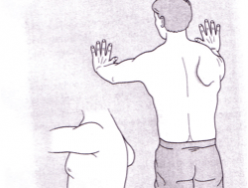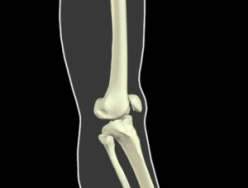The shoulder is a complex joint. That is involved in daily activities such as getting dressed or reaching into a cupboard. Because the shoulder is truly a ball and socket joint, providing it to move freely in six different motions, this makes it more susceptible to injury. In this article, we will review the anatomy of the shoulder, common injuries to the shoulder, functional assessments and training strategies to work with clients with previous shoulder injuries.
Functional Anatomy
Let’s look at two common functional tasks that everyone performs on a daily basis. The first is getting dressed. The movement of putting a shirt on, biomechanically, requires the shoulder to undergo initial horizontal adduction, elbow flexion, then shoulder abduction and external rotation. Anatomically, the posterior deltoid contracts during horizontal abduction, supraspinatus and medial deltoid abduct the shoulder, while teres minor and infraspinatus externally rotates the shoulder.

























